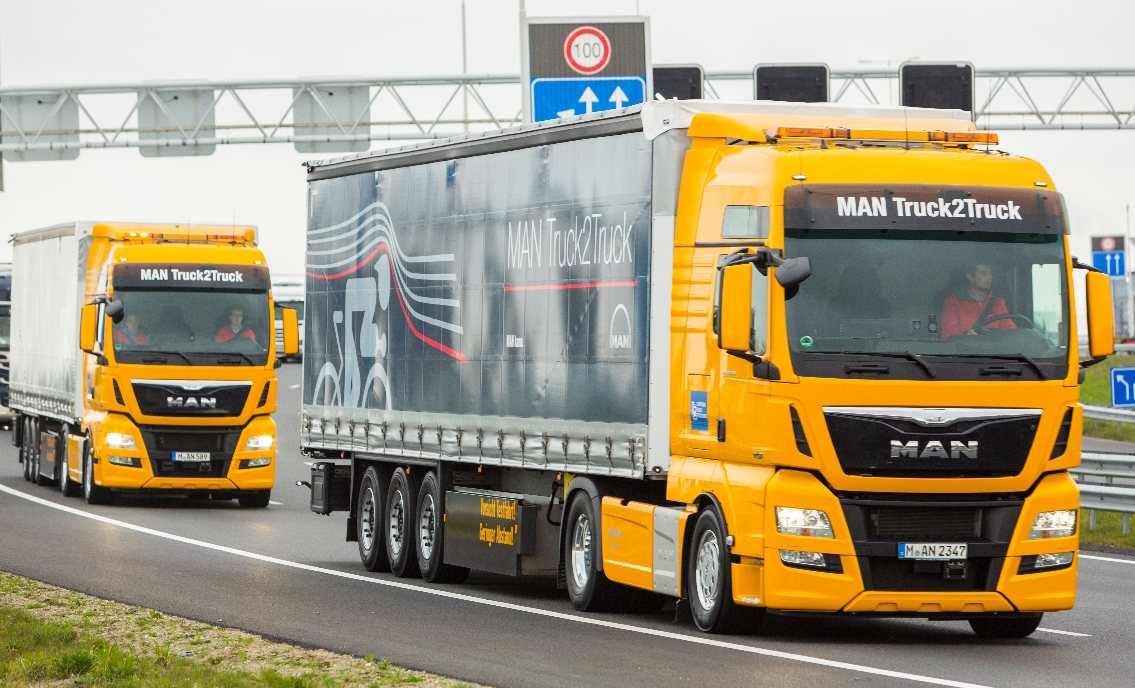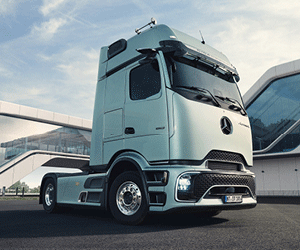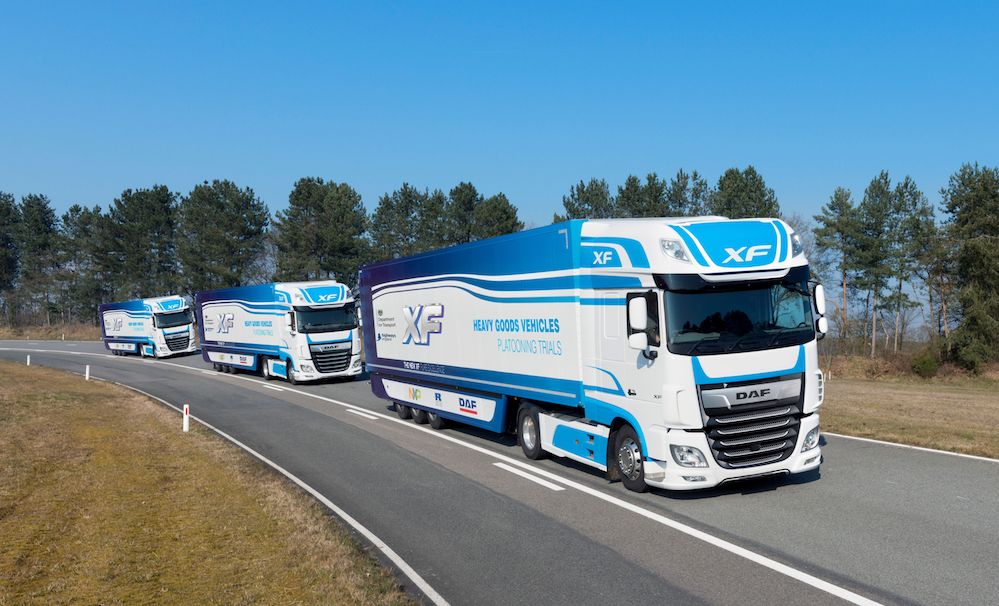Platooning by MAN Truck & Bus makes a significant contribution to the reduction of CO2emissions in road transport. In addition, networked driving can optimise the safety of commercial vehicles while ensuring the best possible infrastructure usage. It helps to reduce driver stress and therefore increases road safety.
MAN Truck & Bus is developing a vehicle system for road transport called Platooning. The system allows two or more truck and trailer combinations to travel in close proximity (on motorways) with the aid of modern technical driver assistance and control systems and car-to-car communication, without compromising road safety.
The distance between each semitrailer combination is approximately 10 metres or around half a second of driving time. The primary objective of this approach is to use the generated slipstreaming effect to achieve a fuel saving of up to 10% for the entire platoon. This fuel saving also permits a reduction in CO2 emissions. Ideally, these effects will be achieved at speeds above 80 km/h.
All vehicles in the platoon, i.e. the entire procession of semitrailer combinations, are connected by an “electronic tow bar”, with the leading vehicle dictating the speed and direction of travel while the convoy is in motion. The required control commands are transmitted in data format to the following vehicles via a car-to-car communication system (ITSG5), while data from these vehicles is also sent back to the tractor vehicle. The car-to-car communication uses automotive Wi-Fi (ITS-G5) operating at a frequency of 5.9 GHz.
Platooning is expected to increase road safety, as 90% of all road accidents are caused by human error. There are more than 30,000 accidents every year in Europe alone. Modern driver assistance systems ensure that platoon driving is safe for all road users. Here is just one example of the safety functions they provide: If another road user cuts into the platoon to take the next motorway exit, the platoon is suspended and the drivers are notified. The semitrailer combinations make room for the other road user. Once the passing motorist leaves the motorway, the entire platoon returns to its original configuration. Modern assistance systems reduce driver stress and increase road safety.
It may be technically feasible to introduce the platoon concept in Europe by 2020. However, this will rely on creating the necessary regulatory frameworks and will require a high level of cooperation between the Member States and the partners involved. This includes the coordination of varying traffic regulations and legislation in the different countries.
MAN Truck & Bus and the European commercial vehicle industry are partners in the “European Truck Platooning Challenge 2016” organised by the Dutch government. As part of this project, MAN will be involved in a demonstration run from Munich to Rotterdam in early April 2016 using its platoon prototype, which consists of two MAN TGX 18480 semitrailer tractors. Using car-to-car communication (ITS-G5), the two vehicles travel along the motorway as a platoon at speeds above approx. 60 km/h, with a minimum distance of 10 metres between them. The longitudinal and lateral control of the following vehicle is also automated. The aim of the Dutch government’s project is to explore the potential in terms of road safety and to increase the efficiency of freight transport.
MAN had already undertaken the “Konvoi” research project between 2005 and 2009, which tested platoons with up to four vehicles.






